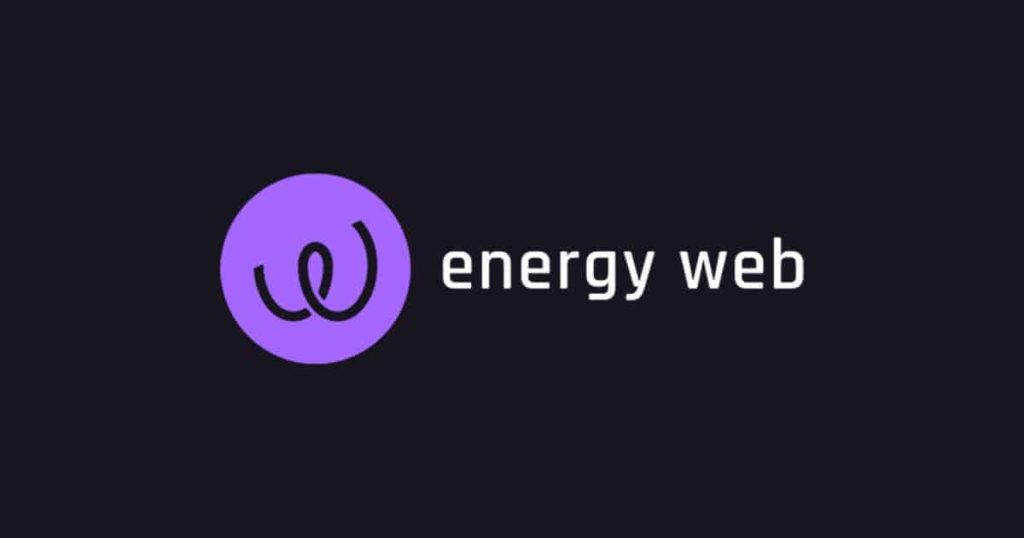
James Carter
Energy Web Token vs Terra Token: A Comprehensive Comparison

Blockchain technology has made a significant impact on various industries, including the energy sector. With the rise of decentralized applications and smart contracts, blockchain has the potential to revolutionize energy markets, promote sustainability, and drive efficiency. Energy Web Token (EWT) and Terra Token (LUNA) are two prominent blockchain-based tokens that have gained attention in their respective domains. In this article, we will delve deep into the features, use cases, benefits, and advantages of both EWT and LUNA, and provide a comprehensive comparison between the two.
Energy Web Token (EWT):
Background and Purpose:
Energy Web Token (EWT) is the native utility token for the Energy Web Chain, a blockchain platform specifically designed for the energy sector. The Energy Web Chain aims to facilitate the transition towards a decentralized and decarbonized energy system. EWT plays a vital role in enabling various energy-related applications and services on the Energy Web Chain.
Key Features:
Decentralized Energy Markets:
EWT enables the creation of decentralized energy markets, allowing peer-to-peer energy trading between prosumers (those who produce and consume energy). This feature promotes energy independence, efficiency, and reduces reliance on traditional centralized energy providers.
Governance and Voting Rights:
EWT holders have governance and voting rights within the Energy Web Chain ecosystem. They can participate in decision-making processes, such as protocol upgrades, validation of transactions, and network parameter changes. This ensures a fair and inclusive governance structure.
Staking and Rewards Mechanism:
EWT holders can stake their tokens to participate in network consensus and validation. By staking EWT, they contribute to network security and receive rewards in return. This incentivizes token holders to actively participate in securing the Energy Web Chain.
Interoperability with Other Energy Blockchain Applications:
The Energy Web Chain promotes interoperability by integrating with other energy blockchain applications. This enables seamless data sharing, cross-platform transactions, and collaboration between different energy market stakeholders.

Use Cases:
Peer-to-Peer Energy Trading:
With EWT, individuals and businesses can engage in peer-to-peer energy trading. Producers can sell excess energy directly to consumers without intermediaries, fostering a more efficient and cost-effective energy market.
Renewable Energy Certificate (REC) Tracking:
EWT facilitates the tracking and verification of Renewable Energy Certificates (RECs) on the Energy Web Chain. This ensures transparency and authenticity in renewable energy generation and allows consumers to make informed decisions based on the origin of their energy.
Grid Optimization and Flexibility Services:
EWT enables grid optimization and flexibility services, such as demand response and virtual power plants. By leveraging the decentralized nature of the Energy Web Chain, these services help balance energy supply and demand, ensuring a more stable and resilient grid.
Benefits and Advantages:
Transparent and Trustworthy Energy Transactions:
EWT leverages the transparency and immutability of blockchain technology, ensuring that energy transactions are transparent, tamper-proof, and traceable. This fosters trust among market participants and reduces the risk of fraudulent activities.
Cost Reduction and Efficiency Improvement in Energy Markets:
By eliminating intermediaries and streamlining processes, EWT helps reduce transaction costs and improve overall efficiency in energy markets. This can lead to lower energy prices for consumers and increased profitability for producers.
Environmental Sustainability and Carbon Footprint Reduction:
EWT promotes the adoption of renewable energy sources by providing a secure and efficient platform for renewable energy transactions. This contributes to the reduction of carbon emissions and accelerates the global transition to a sustainable energy future.
Terra Token (LUNA):
Background and Purpose:
Terra Token (LUNA) serves as the native staking and governance token for the Terra blockchain ecosystem. Terra is a blockchain platform that focuses on stablecoin issuance and aims to create a stable and scalable digital currency system. LUNA plays a crucial role in the stability, governance, and expansion of the Terra ecosystem.
Key Features:
Stablecoin Ecosystem:
Terra’s primary focus is the creation and management of stablecoins, which are digital currencies pegged to the value of traditional fiat currencies. LUNA plays a pivotal role in stabilizing and securing these stablecoins, ensuring their value remains aligned with their respective fiat currency counterparts.
Decentralized Finance (DeFi) Applications:
The Terra ecosystem supports a wide range of decentralized finance (DeFi) applications, including lending, borrowing, and decentralized exchanges. LUNA acts as collateral and helps maintain the stability of these DeFi protocols.
Cross-Chain Interoperability:
Terra promotes cross-chain interoperability, allowing assets to be transferred seamlessly between different blockchain networks. LUNA serves as a bridge asset, facilitating the exchange and movement of value across multiple blockchains.
Staking and Governance Rights:
LUNA holders have the opportunity to stake their tokens and participate in the consensus mechanism of the Terra blockchain. By staking LUNA, users contribute to the security and stability of the network, and in return, receive rewards. Additionally, LUNA holders have governance rights, enabling them to participate in decision-making processes and influence the direction of the Terra ecosystem.
Use Cases:
Stablecoin Issuance and Payment Solutions:
Terra’s stablecoins, such as TerraUSD (UST) and TerraKRW (KRT), provide users with a reliable and efficient means of payment. These stablecoins can be used for everyday transactions, online purchases, remittances, and other financial activities.
Decentralized Lending and Borrowing:
Within the Terra ecosystem, users can participate in decentralized lending and borrowing platforms, allowing them to earn interest on their holdings or obtain loans using their crypto assets as collateral. LUNA plays a critical role in securing these lending and borrowing activities.
Liquidity Provision in DeFi Protocols:
LUNA holders can provide liquidity to various DeFi protocols within the Terra ecosystem. By doing so, they contribute to the depth and efficiency of these protocols, while also earning additional rewards in the form of transaction fees and incentives.
Benefits and Advantages:
Stability and Scalability of Terra’s Stablecoins:
Terra’s stablecoins are designed to maintain stability and low volatility, making them reliable mediums of exchange and stores of value. The integration of LUNA into the stablecoin system ensures the stability and scalability of these digital assets.
Accessible and Efficient DeFi Solutions:
The Terra ecosystem offers a wide range of DeFi applications that are easily accessible to users. LUNA’s role in securing these protocols and facilitating cross-chain interoperability enhances the efficiency and usability of the Terra DeFi ecosystem.
Empowering Global Financial Inclusion:
Terra’s stablecoins and DeFi solutions have the potential to drive financial inclusion by providing individuals and businesses with access to reliable and low-cost financial services. LUNA’s governance and staking mechanisms allow users to actively participate in shaping the future of the Terra ecosystem and contribute to its mission of fostering inclusive finance.
WATCH THE VIDEO BELOW
Comparison between EWT and LUNA:
Token Functionality:
EWT as a utility token for energy-related applications:
EWT primarily functions as a utility token within the Energy Web Chain ecosystem, enabling various energy-related applications such as peer-to-peer energy trading, REC tracking, and grid optimization. Its purpose is to facilitate and incentivize the use of the Energy Web Chain for energy market participants.
LUNA as a governance and staking token for Terra’s ecosystem:
LUNA serves as both a governance and staking token within the Terra ecosystem. It enables holders to participate in the consensus mechanism, secure the network, and earn rewards. Additionally, LUNA holders have voting rights and can influence the decision-making process for protocol upgrades and ecosystem development.
B. Use Cases and Target Markets:
EWT’s focus on energy sector applications and sustainability:
EWT targets the energy sector, with a particular emphasis on promoting sustainability and decarbonization. Its use cases, such as peer-to-peer energy trading and REC tracking, cater to energy market participants, including prosumers, renewable energy developers, and consumers looking to engage in sustainable energy transactions.
LUNA’s emphasis on stablecoin issuance and DeFi use cases:
LUNA’s primary focus lies in the stablecoin ecosystem and decentralized finance applications. Its use cases cater to a broader audience, including individuals, businesses, and crypto enthusiasts seeking stable and efficient digital currencies, as well as participants in the rapidly growing DeFi space.
Technology and Interoperability:
Energy Web Chain’s interoperability with other energy blockchain platforms:
The Energy Web Chain promotes interoperability by integrating with other energy blockchain applications. This interoperability allows seamless data sharing, cross-platform transactions, and collaboration between different energy market stakeholders. It leverages standardized protocols such as the Energy Web Decentralized Operating System (EW-DOS) to facilitate compatibility.
Terra’s cross-chain compatibility and integration with various protocols:
Terra has developed cross-chain capabilities, allowing assets to move across different blockchain networks. LUNA serves as a bridge asset for this cross-chain interoperability, enabling value transfer and integration with other blockchain protocols. This flexibility opens up opportunities for collaboration and integration with various decentralized applications.
Community and Governance:
Energy Web’s focus on energy market stakeholders and governance:
The Energy Web community consists of energy market stakeholders, including utilities, grid operators, technology providers, and regulators. EWT holders play an active role in the governance of the Energy Web Chain, participating in decision-making processes and shaping the future direction of the ecosystem.
Terra’s community-driven governance and staking mechanisms:
The Terra ecosystem operates on a community-driven governance model, allowing LUNA holders to participate in key decisions. This decentralized governance ensures transparency, inclusivity, and accountability. The staking mechanism incentivizes active participation and rewards LUNA holders for securing the network.
Potential Synergies and Collaborations:
Exploring potential collaborations between EWT and LUNA ecosystems:
Given the distinct focus areas of EWT and LUNA, there may be opportunities for synergies and collaborations between the two ecosystems. For instance, integrating EWT into the Terra ecosystem could enable energy-related stablecoin offerings, while leveraging LUNA’s cross-chain capabilities could enhance interoperability for the Energy Web Chain.
Opportunities for joint initiatives in sustainable finance and energy markets:
EWT and LUNA share a common goal of promoting sustainability and driving innovation in their respective domains. Collaborative efforts could involve joint initiatives in sustainable finance, such as the development of green financial products or the integration of renewable energy attributes into stablecoin issuance, combining the strengths of both tokens.
Summary
In conclusion, Energy Web Token (EWT) and Terra Token (LUNA) are two prominent blockchain tokens that serve different purposes within their respective ecosystems. EWT focuses on energy-related applications, enabling peer-to-peer energy trading, RECs tracking, and grid optimization. It offers benefits such as transparent energy transactions, cost reduction, and environmental sustainability. On the other hand, LUNA plays a key role in Terra’s stablecoin ecosystem and DeFi applications. It provides stability, scalability, and cross-chain interoperability, with benefits including accessible DeFi solutions and global financial inclusion.
Latest
Altcoins
09 May 2024
Altcoins
19 Apr 2024
Altcoins
16 Jan 2024
Altcoins
31 Aug 2023
Altcoins
24 Jun 2023
Altcoins
24 Jun 2023













